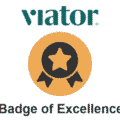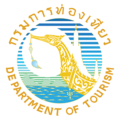Island Hopping in Phang Nga: A Complete Guide

Phang Nga Bay contains over 100 islands scattered across 400 square kilometers of protected marine waters, creating one of Southeast Asia’s premier island hopping destinations. The bay’s unique limestone karst geography, combined with diverse transportation options and varied island characteristics, offers extensive possibilities for multi-island exploration ranging from day trips to extended adventures.
Table of Contents
ToggleGeographic Overview and Island Classifications
Main Island Groups and Formations
Phang Nga Bay’s islands divide into several distinct geographical clusters, each offering different characteristics and accessibility levels. The northern section contains larger inhabited islands with established infrastructure, while southern areas feature predominantly uninhabited limestone formations and hidden lagoons.
Eastern islands, including the famous James Bond Island (Koh Tapu), represent classic limestone karst formations rising dramatically from deep water. These formations typically offer spectacular scenery but limited landing opportunities due to steep-sided geology.
Western islands tend to be larger with more diverse topography, including beaches, mangrove systems, and interior vegetation. Islands like Koh Yao Noi and Koh Yao Yai provide substantial land areas suitable for extended exploration and overnight accommodation.
Central bay islands often feature complex cave systems and hidden lagoons (locally called “hongs”) accessible only by kayak or small boat during appropriate tidal conditions. These formations represent the bay’s most unique geological features.
Accessibility and Infrastructure Levels
Developed islands maintain regular ferry services, established accommodation options, restaurants, and basic tourist infrastructure. These destinations support extended visits and provide reliable access to services and amenities.
Semi-developed islands offer limited infrastructure with basic accommodation and dining options, typically serving adventure-oriented visitors seeking more authentic experiences while maintaining some comfort amenities.
Undeveloped islands provide wilderness experiences with no permanent infrastructure, requiring complete self-sufficiency for overnight visits. These destinations appeal to experienced travelers seeking pristine natural environments and solitude.
Protected areas within the bay system restrict access to certain islands during specific seasons or permanently, protecting critical ecosystems and nesting areas for endangered species.
Transportation Methods and Options
Ferry and Boat Services
Regular ferry services connect major islands to mainland departure points at Bang Rong Pier (Phuket), Tha Dan Pier (Krabi), and other established terminals. Ferry schedules typically accommodate day-trip timing with morning departures and late afternoon returns.
Express boat services reduce travel times between distant islands but operate less frequently than standard ferries. These services often require advance booking during peak tourist seasons and may have weather-dependent scheduling.
Vehicle ferry services transport cars and motorcycles to larger islands like Koh Yao Noi, enabling independent island exploration with personal transportation. Vehicle capacity limitations require advance reservations, particularly during holiday periods.
Charter boat options provide flexibility for custom itineraries and group travel, with various vessel sizes available from longtail boats for small groups to larger vessels accommodating 20+ passengers.
Private Charter Advantages
Longtail boat charters offer intimate exploration experiences with access to shallow areas and hidden lagoons impossible for larger vessels. These traditional boats provide authentic cultural experiences while accessing remote destinations.
Speedboat charters enable rapid movement between distant islands, maximizing destinations visited during limited time periods. Modern speedboats offer comfort amenities and weather protection for extended journeys.
Sailing charter options provide unique perspectives on bay geography while offering environmentally sustainable transportation. Various sailing vessels accommodate different group sizes and experience levels.
Major Island Destinations
Koh Yao Noi and Koh Yao Yai
These twin islands represent Phang Nga Bay’s largest inhabited destinations, offering comprehensive infrastructure while maintaining traditional fishing village character. Koh Yao Noi provides better tourism development with established accommodation, dining, and activity options.
Transportation around the islands includes motorcycle rentals, bicycle options, and longtail boat services for coastal exploration. Road networks enable independent exploration of interior areas, traditional villages, and scenic viewpoints.
Accommodation ranges from luxury resorts to budget guesthouses and traditional homestays. The islands support extended visits with full-service amenities while preserving authentic local culture and lifestyle.
Activities include sea kayaking, rock climbing, fishing excursions, cooking classes, and cultural tours of traditional villages. The islands serve as excellent bases for exploring surrounding smaller islands and limestone formations.
James Bond Island (Koh Tapu) and Surrounding Area
This internationally famous limestone needle rising from deep water represents Phang Nga Bay’s most iconic landmark, featured in the 1974 James Bond film “The Man with the Golden Gun.” The formation rises 20 meters above sea level with distinctive mushroom-shaped erosion patterns.
Tourist infrastructure includes floating platforms for boat access, souvenir vendors, and basic facilities. Visitor management systems control access during peak periods to prevent overcrowding and environmental damage.
Nearby Koh Ping Kan (Khao Ping Kan) provides beach access and cave exploration opportunities. The connected island features walking trails, viewpoints, and additional limestone formations for extended exploration.
Timing visits early morning or late afternoon reduces crowd density while providing superior photography lighting conditions. Tour operators offer various package options combining James Bond Island with other destinations.
Hong Island Complex
The Hong Island group features spectacular hidden lagoons accessible only through narrow limestone tunnels during appropriate tidal conditions. These enclosed water bodies represent some of Phang Nga Bay’s most pristine and dramatic scenery.
Cave kayaking provides the primary access method for reaching interior lagoons, requiring basic paddling skills and guide assistance for safe navigation. Alternative viewing options include longtail boat tours that approach entrances without entering caves.
Multiple hong formations throughout the area offer varying difficulty levels and accessibility requirements. Some remain accessible only to experienced kayakers with technical cave navigation skills.
Timing visits requires coordination with tidal schedules, as lagoon access becomes impossible during extreme low or high tide periods. Weather conditions also affect safety and accessibility for cave navigation.
Koh Panak and Cave Systems
Koh Panak contains extensive limestone cave networks with both water-level and elevated cave systems. The island features multiple lagoons connected by narrow passages requiring careful navigation and timing.
Stalactite and stalagmite formations create cathedral-like chambers accessible by kayak during appropriate conditions. Some caves contain ancient rock paintings and archaeological evidence of prehistoric human habitation.
Guided tours provide essential safety supervision and cultural interpretation for cave exploration. Independent exploration requires advanced skills and appropriate safety equipment for technical cave navigation.
Tidal timing critically affects access to different cave levels and interior chambers. Planning requires understanding of local tide patterns and seasonal variations affecting water levels.
Day Trip Itinerary Options
Classic Tourist Circuit
Standard day trip itineraries typically include James Bond Island, Hong Island, and Koh Panak, providing representative samples of Phang Nga Bay’s diverse attractions. These tours accommodate various experience levels and provide comprehensive bay overviews.
Morning departures from Bang Rong or Ao Phang Nga enable full-day exploration with lunch stops at floating restaurants or beach locations. Return timing accommodates late afternoon arrivals back to mainland departure points.
Group tour options provide cost-effective access with professional guides and included meals. Private charter alternatives offer customized timing and destination selection for specific interests or group requirements.
Photography-focused variations emphasize optimal lighting timing and unique viewpoint access for serious photographers seeking exceptional image opportunities.
Adventure-Oriented Routes
Advanced itineraries incorporate technical cave exploration, remote island visits, and challenging kayaking routes suitable for experienced outdoor enthusiasts. These tours require higher fitness levels and comfort with adventure activities.
Multi-activity combinations include rock climbing, deep cave exploration, and extended kayaking segments targeting active travelers seeking comprehensive outdoor challenges.
Specialized equipment requirements include technical safety gear, advanced navigation tools, and emergency communication equipment for remote area exploration.
Guide qualifications for adventure tours include technical rescue capabilities, advanced first aid training, and extensive local knowledge of challenging routes and safety considerations.
Cultural Immersion Circuits
Cultural tour emphasis includes visits to traditional fishing villages, local markets, and authentic community interactions. These itineraries prioritize cultural exchange over scenic attractions alone.
Koh Panyi floating village represents a primary cultural destination with traditional architecture, local crafts, and authentic dining experiences. Extended visits allow deeper community interaction and cultural understanding.
Traditional boat building demonstrations, fishing technique instruction, and local craft workshops provide hands-on cultural learning opportunities. These activities require advance arrangement with local communities.
Respectful tourism practices include appropriate clothing, cultural sensitivity training, and contribution to local community development through responsible tourism choices.
Multi-Day Island Hopping Strategies
Progressive Exploration Approach
Multi-day itineraries enable thorough exploration of individual islands while providing flexibility for weather-dependent activities and destinations. This approach reduces rushing while maximizing experience quality.
Base camp strategies involve establishing accommodation on major islands like Koh Yao Noi while conducting day trips to surrounding smaller islands and attractions. This minimizes luggage transport while providing comfortable base facilities.
Progressive skill development allows beginning adventurers to build capabilities over multiple days, starting with easier destinations and advancing to more challenging exploration as confidence develops.
Weather contingency planning becomes critical for multi-day trips, with alternative indoor activities and flexible scheduling accommodating tropical weather variability.
Accommodation Integration Planning
Accommodation diversity ranges from luxury resorts offering comprehensive services to basic homestays providing authentic cultural experiences. Selection depends on desired comfort levels and cultural immersion goals.
Booking strategies during peak season require advance reservations, particularly for unique accommodation options like floating bungalows or eco-lodges with limited capacity.
Transportation coordination between accommodation locations requires planning for luggage transport and timing coordination with ferry schedules and private boat arrangements.
Activity Combination Optimization
Multi-day programs enable activity combinations impossible during single-day visits, including sunrise photography sessions, night kayaking, fishing expeditions, and extended cave exploration.
Skill development progression allows participants to advance from basic activities to more challenging adventures as capabilities develop throughout extended stays.
Rest and recovery periods become important during multi-day active programs, requiring balance between adventure activities and relaxation time for sustainable enjoyment.
Equipment and logistical support improves during extended stays, with opportunities for gear optimization and local resource utilization not available during brief visits.
Seasonal Considerations and Timing
Weather Pattern Impacts
Northeast monsoon season (November-March) provides optimal conditions for island hopping with calm seas, clear skies, and predictable weather patterns. This period offers the most reliable conditions for boat transportation and outdoor activities.
Southwest monsoon season (May-October) presents challenging conditions with rough seas, frequent storms, and reduced visibility. Many operators limit services during peak monsoon periods due to safety considerations.
Inter-monsoon periods (April and October-November) offer variable conditions with potential for both excellent weather and sudden deterioration. Flexible planning becomes essential during transitional seasons.
Peak tourist season corresponds with optimal weather conditions, resulting in higher prices, crowded destinations, and advance booking requirements for accommodation and transportation.
Tidal Influence on Accessibility
Extreme tidal variations in Phang Nga Bay significantly affect island accessibility, particularly for shallow-draft vessels and cave exploration activities. Some destinations become completely inaccessible during certain tidal phases.
Spring tide periods produce maximum tidal ranges, creating both optimal access to normally unreachable areas and complete inaccessibility to other locations. Planning requires detailed tide schedule coordination.
Cave and lagoon access timing depends entirely on tidal conditions, with some hongs accessible only during specific 2-3 hour windows within each tidal cycle.
Beach landing opportunities vary dramatically with tidal phases, affecting lunch stops, rest breaks, and emergency access to islands throughout daily itineraries.
Transportation Logistics and Costs
Public Transportation Options
Ferry services from mainland departure points provide budget-friendly access to major islands with regular scheduling and standardized pricing. These services typically operate year-round with seasonal schedule adjustments.
Cost comparison between public ferries and private charters shows significant savings for individual travelers, while group charters may provide better value for 4+ person groups seeking customized itineraries.
Advance booking requirements vary by season and service type, with peak period reservations essential for popular routes and limited-capacity services.
Baggage allowances and restrictions affect multi-day travelers, with weight limits and prohibited items requiring careful packing consideration for extended island stays.
Private Charter Economics
Charter boat pricing depends on vessel size, duration, destination distance, and seasonal demand factors. Cost per person decreases significantly with larger group sizes for charter services.
Fuel costs represent major charter expense components, with longer distances and multiple destinations increasing total charter costs substantially. Route optimization reduces overall expenses.
Guide services and equipment provision often integrate with charter packages, providing comprehensive service bundles that may offer better value than separate service arrangements.
Customization options allow specific route modifications, timing adjustments, and activity combinations unavailable through standard tour packages, justifying premium pricing for specific requirements.
Safety Considerations for Island Hopping
Marine Safety Protocols
Weather monitoring becomes critical for multi-island travel, with conditions changing rapidly between departure and return times. Professional operators maintain communication systems for weather updates and route modifications.
Emergency communication equipment includes VHF radios, satellite communicators, and emergency flares for vessel-to-shore contact during remote area exploration. Equipment redundancy provides safety margins for extended trips.
Life jacket requirements and proper fitting apply to all boat transportation and water activities. Quality variations between operators affect safety levels, requiring equipment inspection before trip commencement.
Medical emergency considerations include distance to medical facilities, evacuation procedures from remote islands, and first aid capabilities of guides and boat crews.
Remote Area Preparedness
Limited infrastructure on undeveloped islands requires complete self-sufficiency for food, water, shelter, and emergency supplies. Inadequate preparation can create dangerous situations during extended visits.
Communication limitations in remote areas affect emergency response capabilities and weather update access. Satellite communication devices provide safety margins for extended remote area visits.
Wildlife encounters include marine life interactions and terrestrial species on larger islands. Understanding appropriate responses to various encounters prevents dangerous situations and environmental disturbance.
Environmental hazards include sharp limestone formations, slippery surfaces, unstable rocks, and tidal current exposure. Appropriate footwear and cautious movement prevent injury in challenging terrain.
Environmental Responsibility and Conservation
Marine Protected Area Regulations
Phang Nga Bay’s UNESCO World Heritage status establishes specific regulations governing visitor behavior, waste disposal, wildlife interaction, and environmental protection. Violations carry legal penalties and contribute to environmental degradation.
Anchoring restrictions protect coral reefs and seagrass beds from damage by boat anchors and chains. Designated anchorage areas and mooring buoys provide alternatives for vessel securing without environmental impact.
Wildlife protection regulations prohibit feeding, harassment, or disturbing marine and terrestrial species. Specific regulations protect endangered species and critical habitat areas during breeding seasons.
Waste management requirements include pack-in/pack-out policies for all trash and human waste. Limited disposal facilities on remote islands make visitor responsibility essential for environmental protection.
Sustainable Tourism Practices
Operator selection criteria should include environmental certifications, waste management practices, local community benefit programs, and conservation support activities. Responsible operators contribute to long-term destination preservation.
Group size limitations reduce environmental impact while improving visitor experience quality. Smaller groups create less disturbance and enable more authentic interactions with local communities.
Local economic support through accommodation choices, dining selections, and activity bookings benefits community development while providing incentives for environmental conservation.
Cultural respect practices include appropriate clothing, behavior guidelines, photography permissions, and contribution to local community development through responsible tourism spending.
Photography and Documentation
Optimal Timing and Positioning
Golden hour photography opportunities occur during early morning and late afternoon periods when limestone formations receive dramatic lighting. Planning photography timing requires coordination with transportation schedules and tide timing.
Aerial perspective opportunities include elevated viewpoints on larger islands and drone photography where permitted. Regulations restrict drone usage in certain areas, requiring permit research before equipment transport.
Cave photography requires specialized equipment including waterproof housings, powerful lighting systems, and stabilization equipment for low-light conditions. Technical challenges include humidity control and equipment protection.
Wildlife photography opportunities include marine life encounters, bird watching, and terrestrial species observation. Telephoto lens requirements and weather protection considerations affect equipment selection and transportation.
Equipment Protection and Transport
Saltwater exposure affects all electronic equipment, requiring comprehensive waterproof protection systems. Multiple protection layers provide redundancy against equipment failure during extended marine exposure.
Transportation considerations include weight restrictions for boat travel, shock protection during rough water transport, and accessibility for quick deployment during optimal photography moments.
Backup equipment strategies account for potential loss or damage during remote area exploration. Equipment redundancy ensures continued documentation capability throughout extended island hopping adventures.
Storage and charging considerations during multi-day trips require planning for equipment maintenance and power management in locations with limited electrical infrastructure.
Conclusion
Island hopping in Phang Nga Bay offers diverse exploration opportunities ranging from comfortable day trips to challenging multi-day adventures. Success depends on appropriate planning, realistic expectation setting, and understanding of local conditions and constraints.
Transportation options accommodate various budgets and group sizes, while destination diversity provides experiences suitable for different interests and capability levels. Seasonal timing significantly affects both conditions and costs, requiring advance planning for optimal experiences.
Safety considerations become paramount during remote area exploration, requiring appropriate preparation, equipment, and professional guidance for challenging destinations. Environmental responsibility ensures destination preservation for future generations while supporting local communities dependent on sustainable tourism.
The bay’s combination of spectacular scenery, diverse destinations, and comprehensive infrastructure makes it an ideal location for both beginning and experienced island hoppers seeking world-class marine exploration opportunities.












